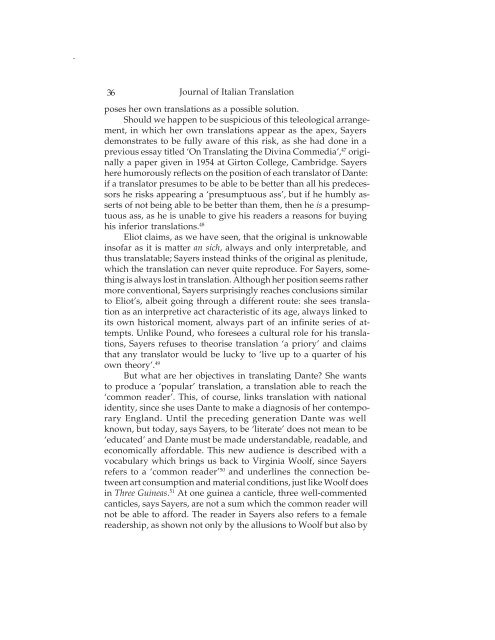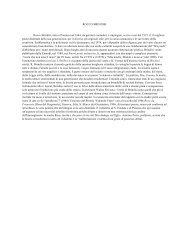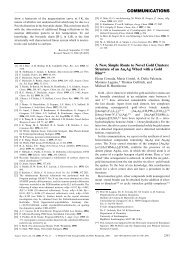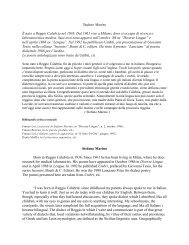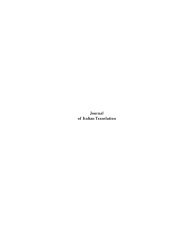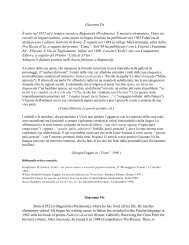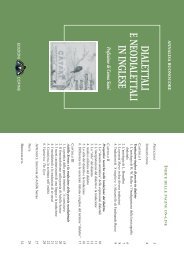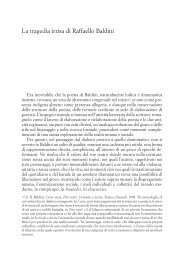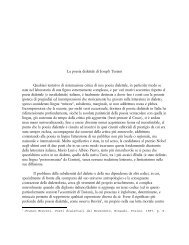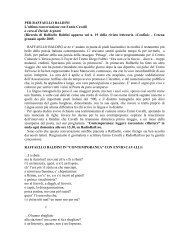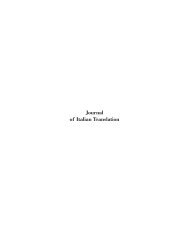Journal of Italian Translation
Journal of Italian Translation
Journal of Italian Translation
You also want an ePaper? Increase the reach of your titles
YUMPU automatically turns print PDFs into web optimized ePapers that Google loves.
36 <strong>Journal</strong> <strong>of</strong> <strong>Italian</strong> <strong>Translation</strong><br />
poses her own translations as a possible solution.<br />
Should we happen to be suspicious <strong>of</strong> this teleological arrangement,<br />
in which her own translations appear as the apex, Sayers<br />
demonstrates to be fully aware <strong>of</strong> this risk, as she had done in a<br />
previous essay titled ‘On Translating the Divina Commedia’, 47 originally<br />
a paper given in 1954 at Girton College, Cambridge. Sayers<br />
here humorously reflects on the position <strong>of</strong> each translator <strong>of</strong> Dante:<br />
if a translator presumes to be able to be better than all his predecessors<br />
he risks appearing a ‘presumptuous ass’, but if he humbly asserts<br />
<strong>of</strong> not being able to be better than them, then he is a presumptuous<br />
ass, as he is unable to give his readers a reasons for buying<br />
his inferior translations. 48<br />
Eliot claims, as we have seen, that the original is unknowable<br />
ins<strong>of</strong>ar as it is matter an sich, always and only interpretable, and<br />
thus translatable; Sayers instead thinks <strong>of</strong> the original as plenitude,<br />
which the translation can never quite reproduce. For Sayers, something<br />
is always lost in translation. Although her position seems rather<br />
more conventional, Sayers surprisingly reaches conclusions similar<br />
to Eliot’s, albeit going through a different route: she sees translation<br />
as an interpretive act characteristic <strong>of</strong> its age, always linked to<br />
its own historical moment, always part <strong>of</strong> an infinite series <strong>of</strong> attempts.<br />
Unlike Pound, who foresees a cultural role for his translations,<br />
Sayers refuses to theorise translation ‘a priory’ and claims<br />
that any translator would be lucky to ‘live up to a quarter <strong>of</strong> his<br />
own theory’. 49<br />
But what are her objectives in translating Dante? She wants<br />
to produce a ‘popular’ translation, a translation able to reach the<br />
‘common reader’. This, <strong>of</strong> course, links translation with national<br />
identity, since she uses Dante to make a diagnosis <strong>of</strong> her contemporary<br />
England. Until the preceding generation Dante was well<br />
known, but today, says Sayers, to be ‘literate’ does not mean to be<br />
‘educated’ and Dante must be made understandable, readable, and<br />
economically affordable. This new audience is described with a<br />
vocabulary which brings us back to Virginia Woolf, since Sayers<br />
refers to a ‘common reader’ 50 and underlines the connection between<br />
art consumption and material conditions, just like Woolf does<br />
in Three Guineas. 51 At one guinea a canticle, three well-commented<br />
canticles, says Sayers, are not a sum which the common reader will<br />
not be able to afford. The reader in Sayers also refers to a female<br />
readership, as shown not only by the allusions to Woolf but also by


